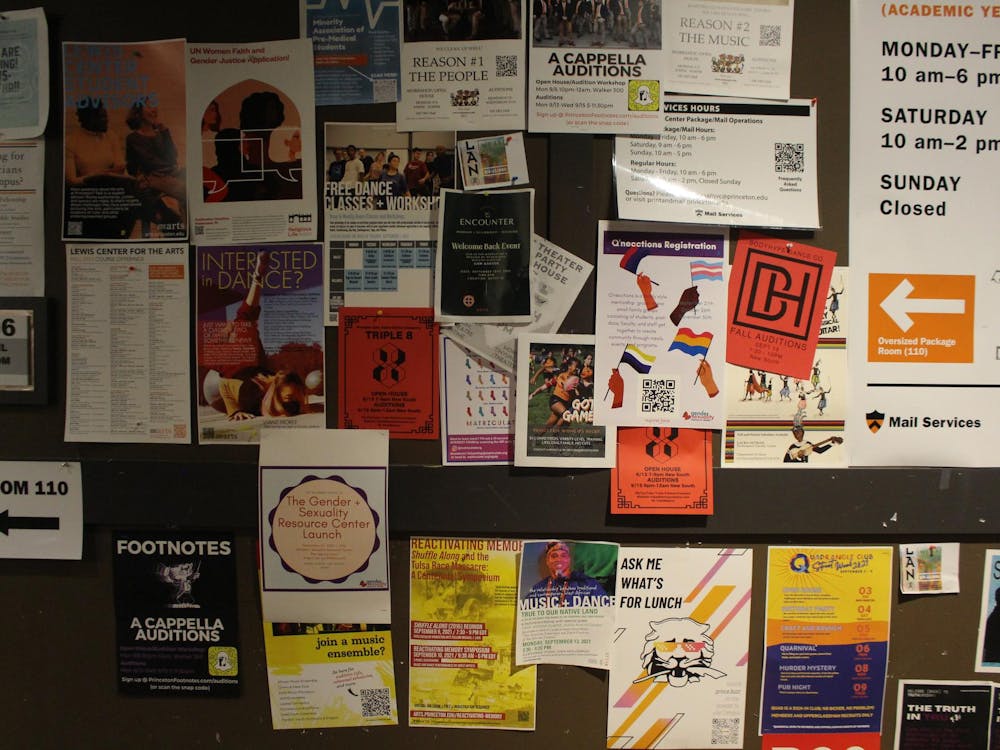It may have been this recent progress that prompted the Office of Information Technology (OIT) to introduce at Monday’s meeting of the Council of the Princeton University Community (CPUC) a USG-backed measure to limit student printing. While reducing University-wide paper consumption is hardly a bad idea (in fact, it’s quite a good one), the OIT/USG initiative in its present incarnation is extremely worrying. OIT’s proposal is poorly thought out, smacks of increased bureaucracy and raises serious questions about efficiency and fairness.
To begin with, it’s difficult to establish that student printing on campus is a problem, especially from a numerical standpoint. The ‘Prince’ reported on Tuesday that students are responsible for 20 percent of all printing University-wide. That’s an important statistic. If student printing is such a problem, why is it that administrators, faculty members, etc. print four times as much as undergraduates do? Obviously, admissions publications, “Major Choices” booklets, etc. increase the amount of printing the administration does, but an 80-20 split is a massive disparity. The administration ought to be willing to make a similar commitment before it asks students to cede free printing privileges.
Second, it’s unclear how effective any cap on campus-wide student printing would be. OIT statistics show that last year, the average number of pages printed by an individual student was 1,291, with a standard deviation of 1,446. If we believe OIT, those numbers yield two conclusions: First, a printing quota of 3,000 pages would likely do little to curb the paper consumption of the “average” Princeton student. But second, the huge standard deviation means that around a third of the undergraduate student body falls within spitting distance of the new quota. Adding in another OIT statistic — that student paper consumption rises by 5 to 15 percent each year — we can conclude that, ultimately, with time, the 3,000-page limit would be ineffective for half of the student body while seriously annoying the other half.
To make matters worse, it’s unclear how large a problem paper consumption is from a carbon footprint standpoint. Last month, ‘Prince’ contributing columnist James Coan ’09, after sitting down and doing the math, concluded, “… emissions from paper are small. The GHG [Green House Gas] emissions of a student who uses 100 pages of the Boise 100 percent recycled paper each week increase by about 3 percent.” In fact, in adopting this proposal, the USG risks creating a modified moral hazard for students and USG officers alike: If we believe, incorrectly, that a printing quota is going to save the environment, it reduces the incentive for us to go green in other, far more effective ways.
Finally, there are practical reasons to be worried about the paper-reduction proposal. The USG was willing to concede on Monday that there ought to be exceptions to the 3,000-page rule: Seniors writing theses, juniors writing JPs, anyone in a reading-intensive class. Its solution to the exception problem, though, is very, very troubling. OIT director Steve Sather (who couldn’t be reached for this column) said at Monday’s CPUC meeting that “Different paper quotas would apply to various subsets of the University community.” That statement looks as though it came straight from the IRS tax code. Who will be the arbiter of paper exception applications? The USG? OIT? A new Office of Paper Management (which would probably put up wasteful fliers around campus advertising the benefits of saving paper)?
So, while trying to reduce the general level of student paper consumption at Princeton may be a nice idea in theory, it’s far too difficult to implement in practice. With that said, OIT and the University would be justified in trying to reduce the amount of wasted paper campus-wide. Though wasted paper is difficult to define, there are two easy fixes: prevent students from printing more than five copies of the same document (make them pay for copies instead to create a financial disincentive to waste) and ensure that all printers across the University have a double-sided printing capability. Doing so avoids the general unpleasantness of a quota.
Bashing the USG is a time-honored ‘Prince’ tradition. Hating on the Weinstein administration became almost cliche last year. It’s important that there be a student backlash against a printing quota, though, because the USG is almost right: Trying to reduce paper waste across campus is a good idea, but a quota makes little sense. Environmentalism based on sound, defensible principles is a worthwhile investment in the future. Fake environmentalism, however, is a waste of everyone’s time. And paper.
Charlie Metzger is a freshman from Palm Beach, Fla. He can be reached at cmetzger@princeton.edu.







